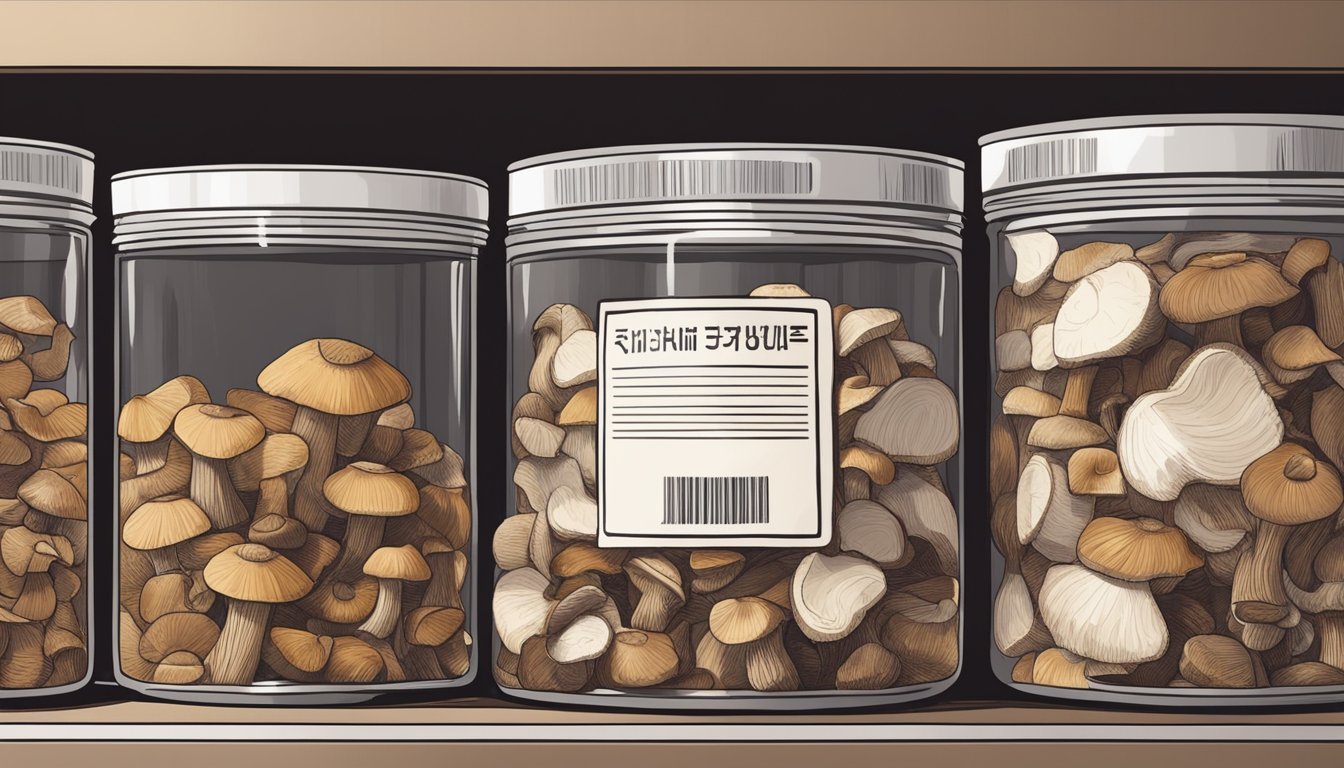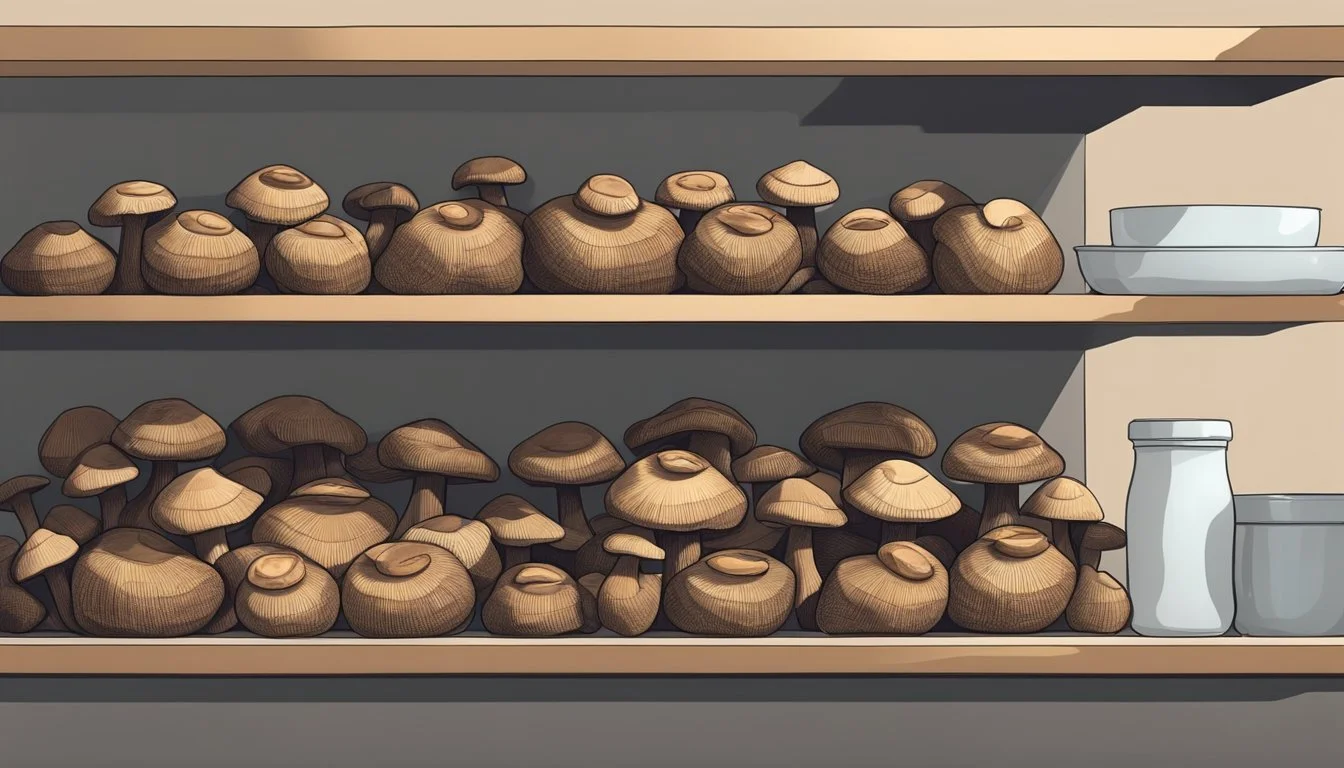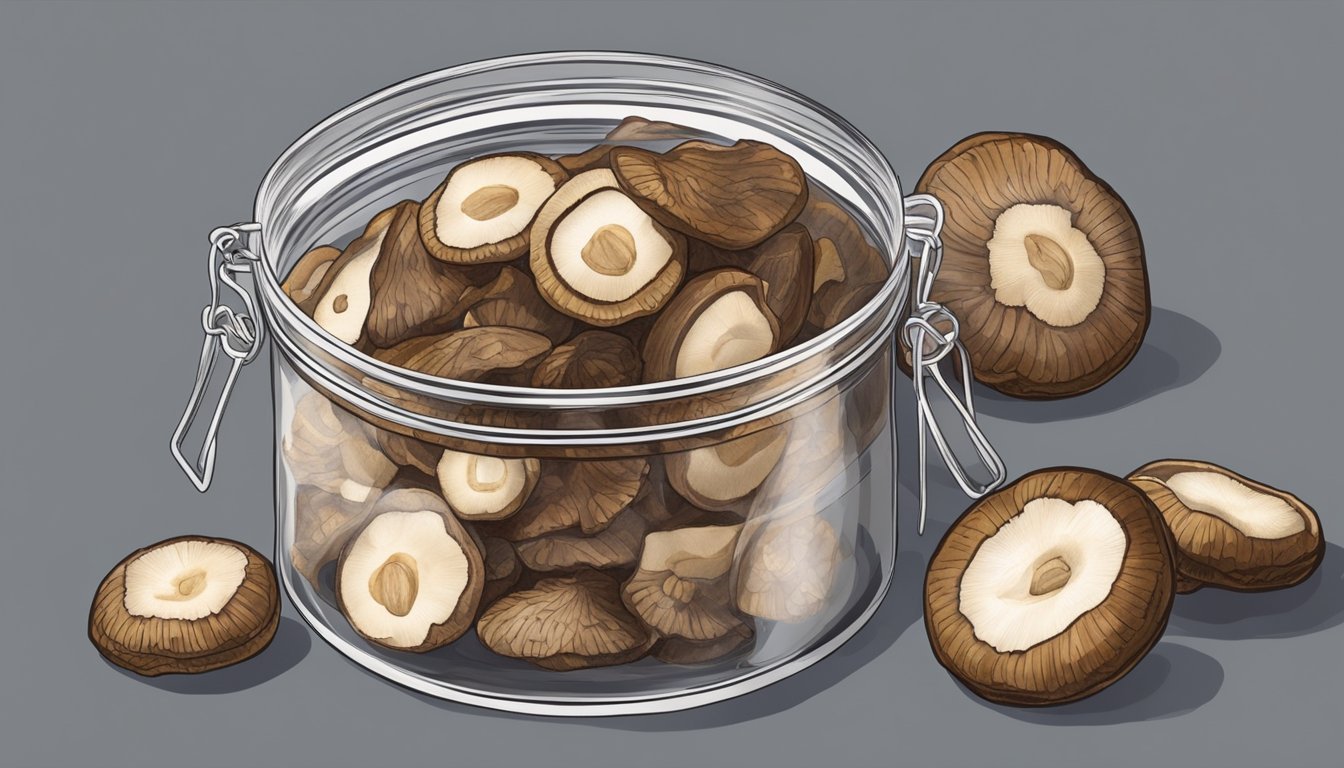How Long Do Dried Shiitake Mushrooms Last?
Shelf Life and Storage Tips
Dried shiitake mushrooms are prized for their rich umami flavor and versatility in culinary applications. As a shelf-stable food item, their lifespan greatly exceeds that of their fresh counterparts, provided that they are stored properly. The shelf life of dried shiitake mushrooms is largely contingent on storage conditions; they must be kept in a cool, dry place, shielded from direct sunlight and moisture, which are contributors to spoilage and mold.
When stored in an airtight container under these ideal conditions, dried shiitake mushrooms (What wine goes well with mushrooms?) can maintain their quality for up to two years. Over time, even properly stored dried shiitakes may experience a slight change in texture, becoming tougher, but they will generally retain their flavor. Ensuring that the mushrooms are kept away from humid environments and not exposed to heat will help preserve their shelf life, allowing them to be a long-lasting staple in pantries around the world.
Understanding Dried Shiitake Mushrooms
Dried shiitake mushrooms are renowned for their rich flavor, diverse culinary applications, and substantial health benefits. This section explores the various aspects of dried shiitakes, from their distinctive characteristics to their nutritional advantages and usage in the kitchen.
Characteristics of Shiitake Mushrooms
Dried shiitake mushrooms are known for their earthy, smoky flavor which intensifies upon drying. Their texture transforms to chewy when rehydrated, providing a meaty substance to dishes. They vary in color from tan to dark brown and are recognized by their umbrella-shaped caps.
Health Benefits of Shiitake Mushrooms
Shiitake mushrooms are a powerhouse of nutrients. They contain fiber, protein, and a mix of minerals, along with notable concentrations of vitamin D. Their anti-inflammatory properties assist in reducing inflammation, which supports the maintenance of a healthy immune system.
Culinary Uses of Dried Shiitake
In cooking, dried shiitake mushrooms are celebrated for their umami-rich profile, enhancing soups, stews, and stir-fries. They can be rehydrated to make a flavorful stock or even ground into a powder for tea, thereby elevating the taste of pasta dishes and other savory meals.
Purchasing and Selection
When buying dried shiitake mushrooms, consumers should look for high-quality options at grocery stores or online retailers. Appearance is key – they should appear whole and unblemished. It's important to select mushrooms that have a uniform size to ensure even cooking.
Shiitake Mushroom Growing Kits
For those interested in cultivating their own mushrooms, shiitake mushroom growing kits are available. These kits typically include spores and growing logs, enabling enthusiasts to grow shiitakes at home and harvest fresh mushrooms directly before drying.
Proper Storage Practices
Dried shiitake mushrooms retain their quality when stored under optimal conditions, emphasizing the importance of temperature, humidity, and container selection to extend shelf life and prevent spoilage.
Ideal Storage Conditions
For dried shiitake mushrooms to maintain their flavor and texture, a cool, dry place away from direct light is essential. Temperature fluctuations and high humidity can accelerate spoilage, making a stable environment imperative. They should not be stored at room temperature for extended periods.
Containers and Packaging
The choice of storage containers significantly influences the mushrooms' longevity. Airtight containers such as glass jars or vacuum-sealed bags are recommended to protect them from moisture and preserve their quality. Avoid using containers that are not breathable for long-term storage, as this could trap moisture and lead to mold growth.
Shelf Life and Spoilage Indicators
Dried shiitake mushrooms have an impressive shelf life, typically lasting:
Up to 6 months at room temperature.
Up to one year if stored in the refrigerator.
Up to 2 years in the freezer.
However, signs of spoilage include:
Appearance of mold.
A slimy texture or discoloration.
A strong or foul odor.
Regular checks are recommended to ensure quality and prevent spoilage.
Methods to Extend Shelf Life
Preserving the quality and extending the shelf life of dried shiitake mushrooms involves proper storage techniques. These methods protect the mushrooms from heat, sunlight, and moisture.
Drying Techniques
Proper drying is crucial for the preservation of dried shiitake mushrooms. One should ensure that the mushrooms are completely dehydrated to prevent mold growth. Drying can be done using a food dehydrator or an oven set to a low temperature to maintain the mushrooms' meaty texture and concentrated flavor. They should be stored away from direct sunlight in a cool, dark place.
Freezing Dried Shiitake
By storing dried shiitake mushrooms in the freezer, their shelf life can be extended significantly. For optimal results:
Use airtight, freezer-safe containers or bags to prevent freezer burn.
Label the containers with the date of freezing to keep track of their shelf life.
Rehydration Process
When rehydrating dried shiitake mushrooms, one can preserve the quality by:
Soaking them in warm water for an extended period, which varies from 30 minutes to 2 hours depending on the size.
Using the soaking liquid as a tea or in recipes, as it contains a concentrated flavor from the mushrooms.
Substituting Fresh with Dried
Dried shiitake mushrooms can substitute for fresh ones in many recipes. They offer a longer shelf life and a more concentrated flavor. When substituting, it's important to:
Adjust the quantity used, considering dried shiitake have a more potent flavor and meaty texture.
Rehydrate the mushrooms before using them to restore their texture.
Using Dried Shiitake in Cooking
Dried shiitake mushrooms are renowned for their ability to impart a rich, umami flavor and chewy texture to a variety of dishes, from soups and stews to stir-fries and pasta. The following sections provide specific methods for preparing and integrating these flavorful fungi into your cooking.
Preparation Tips
Before cooking, dried shiitake mushrooms require rehydration which can be done by soaking them in hot water for 20 to 30 minutes. The mushrooms will swell to several times their dried size, so ensure they are completely submerged. After rehydrating, the mushrooms can be sliced according to the recipe's needs. The stems are often removed due to their tougher texture.
Incorporating into Recipes
Once prepared, rehydrated shiitake mushrooms can be used just as fresh ones. They contribute a chewy texture and an earthy, umami flavor to various dishes. When slicing shiitake for incorporation into recipes, consider the size and texture they should contribute. For example, finely chopped shiitake can disperse flavor more evenly, while larger slices can provide a meaty bite.
Creating Flavorful Stocks and Broths
Dried shiitake mushrooms excel in creating deep, flavorful bases for stocks and broths. Mushroom broth is particularly rich in umami, due to the concentration of flavor compounds in dried shiitakes. To create a broth, simmer the mushrooms with complementary seasonings and strain before use.
Flavor Components Ingredients Base Dried shiitake mushrooms Aromatics Onions, garlic Umami Enhancers Soy sauce, miso paste
Enhancing Soups and Stews
Adding sliced shiitake to soups and stews not only introduces depth of flavor but also a satisfying texture that complements other ingredients. They should be added at a stage where they can simmer and further infuse the dish with their rich, earthy flavor without becoming overcooked.
Safety and Quality Considerations
When discussing the longevity of dried shiitake mushrooms, it's essential to consider both safety and quality aspects that can affect their shelf life. Proper storage techniques are pivotal to avoiding spoilage and contamination, which can lead to illness and degraded mushroom quality.
Avoiding Contamination
To prevent contaminants from spoiling dried shiitake mushrooms, they should be stored in airtight containers away from any potential sources of debris or microorganisms. Food safety practices, such as keeping the mushrooms dry and handling them with clean utensils, are critical in minimizing the risk of contamination.
Detecting Quality Deterioration
Appearance: Look for uniform color without discoloration.
Smell: A fresh, earthy smell is a sign of quality; any strong, off-odors may indicate spoilage.
Texture: While dry, mushrooms should not exhibit wrinkles or brittleness that goes beyond what is typical for dried shiitake.
Expiration and Best Before Dates
While dried shiitake mushrooms do not have a standard expiration date, best before dates can provide guidance on peak quality. If stored properly, mushrooms can last well beyond these dates but should be checked regularly for signs of quality deterioration.
Identifying Signs of Improper Storage
Mold Growth: Any visible signs of mold suggest improper storage conditions and potential health risks.
Foul Odor: A storage environment that is not cool or dry can lead to spoilage, evidenced by a foul smell.
Discoloration: Changes in color can indicate that the mushrooms are past their peak quality.
Conclusion
When it comes to dried shiitake mushrooms, their longevity is impressive. In optimal storage conditions – a cool, dry place away from direct sunlight – shiitake mushrooms maintain their quality for a significant period. Placing them in an airtight container is crucial, as this protects them from moisture and humidity, which are detrimental to their preservation.
The shelf life of dried shiitake mushrooms generally spans from six months to up to two years. During this time, their flavor may even intensify, making them a cherished ingredient for cooking. Their nutritional value, highly regarded in various cuisines, does not diminish quickly, further adding to their appeal as a pantry staple.
To ensure the mushrooms retain their desired qualities, one must strictly avoid exposing them to moisture and heat sources. Not only does proper storage maintain the texture and robust flavor, but it also prevents spoilage and potential mold growth.
In summary, when one incorporates dried shiitake mushrooms into their pantry, they can be confident in their extended usability. Those looking to elevate their cooking with the deep, umami-rich flavors of shiitake will find these dried mushrooms to be a reliable and long-lasting ingredient, provided they are stored with care.
Additional Resources
When seeking to extend the shelf life of dried shiitake mushrooms or to ensure safe consumption, a variety of resources are available. Consumers have multiple avenues for purchasing and learning about these mushrooms.
Online Retailers: For those interested in purchasing dried shiitake mushrooms, numerous online retailers provide a range of options with detailed descriptions of origin, storage recommendations, and expiration dates.
Amazon
Walmart
Specialty gourmet stores
Growing Kits: Individuals preferring to grow their own shiitake mushrooms can purchase growing kits online. These kits often come with instructions for cultivation and harvesting, providing a fresh option for enthusiasts.
Back to the Roots Organic Mushroom Farm
North Spore Mushroom Grow Kits
Food Safety Guidelines: Regarding food safety, authoritative entities offer guidelines on the storage and handling of dried shiitake mushrooms to prevent spoilage and potential foodborne illness.
U.S. Food and Drug Administration (FDA)
Centers for Disease Control and Prevention (CDC)
To access reliable information on the shelf life and proper storage techniques for dried shiitake mushrooms, consumers may refer to educational articles and storage tips from credible food-related websites and blogs.







